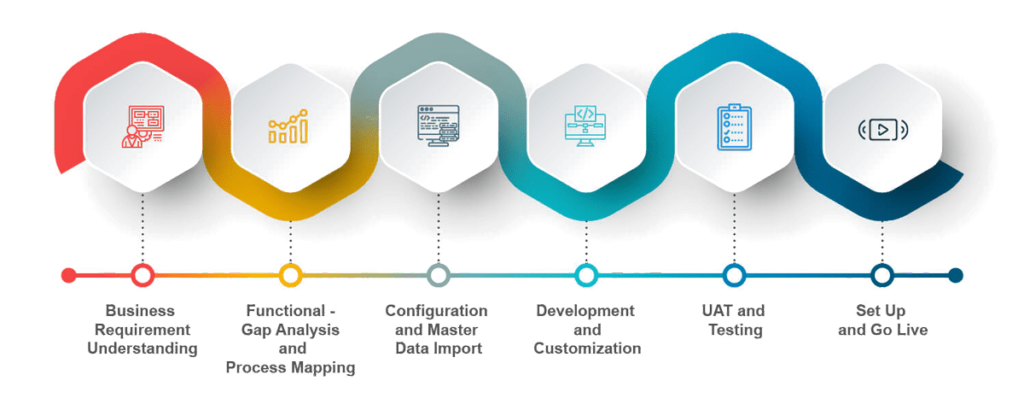1. Introduction to OdooERP Implementation

Enterprise Resource Planning (ERP) is a type of software solution that integrates and automates various business processes across different departments in an organization. Implementing an ERP system can streamline operations, increase efficiency, and provide valuable insights into business performance. In this comprehensive guide, we will discuss the importance of ERP implementation and provide a step-by-step guide for a successful deployment.
2. OdooERP Implementation Plan
An ERP implementation plan is a critical component of a successful ERP deployment. The plan should outline the project timeline, key objectives, and responsibilities of each team member. When creating an ERP implementation plan, consider the following elements:
• Defining project scope and objectives
• Identifying and addressing potential roadblocks
• Allocating resources and budget
• Establishing clear communication channels
3. OdooERP Implementation Strategy
An effective ERP implementation strategy should align with the overall goals and objectives of your organization. When developing an ERP implementation strategy, consider the following factors:
• Understanding your current business processes and identifying areas for improvement
• Evaluating your existing technology infrastructure
• Selecting the right ERP solution for your business needs
• Building a project team with the necessary skills and expertise to manage the implementation process
4. OdooERP Implementation Checklist
A comprehensive ERP implementation checklist can help you ensure a smooth and successful deployment. The following are essential steps for a successful ERP implementation:
• Preparation and planning
• Data migration and integration
• Testing and validation
• Training and support
• Go live and continuous improvement
5. OdooERP Implementation Steps
Implementing an ERP solution can be a complex and time-consuming process. Before beginning an ERP implementation, it is important to thoroughly plan and prepare. This includes assembling a project team, setting clear goals and objectives, and determining a timeline for the project. The following is a step-by-step guide for ERP implementation:

I. Preparation and planning:
• Define project scope and objectives
• Evaluate existing technology infrastructure
• Select the right ERP solution for your business
II. Analysis of Business Processes: To ensure a successful ERP implementation, it is necessary to analyze your current business processes and determine how they can be improved or streamlined through the use of an ERP system.
III. System Integration: The next step is to integrate the ERP system with your existing technology infrastructure. This includes connecting the ERP system to databases, applications, and other systems that are critical to your business operations.
IV. Data Migration: Once the ERP system is integrated, the next step is to migrate your data to the new system. This includes transferring data from legacy systems and ensuring that it is properly formatted and organized for use in the ERP system.
V. Testing and Training: Ensuring that the ERP system is functioning as expected and providing training to end-users to ensure they are comfortable using the new system.
VI. Go-Live: The final stage where the new ERP system is rolled out and put into use.
Conclusion:
OdooERP implementation can have a significant impact on the success of a business. By following the steps outlined in this guide and focusing on preparation and planning, businesses can ensure a smooth and successful ERP implementation. Whether you're just getting started or looking to improve your current ERP system, the benefits of ERP implementation make it essential that you do it well.
#odooappstore #odoomodule #bigcommerce #bigcommerceintegration #odoo14 #odoo15 #odoo16 #ecommerce #odooecommerce #odoocertified #odooindia #odoopaymentgateway #synodica #odooconektaintegration #odoosquareintegration #odooadvancesearch
